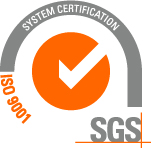Rome have 2.7 million residents, spread over an area of 1,285 km2. Currently, it is the most populous and extensive municipality in Italy. The Roman road network covers more than 8,780 km, of which about 5,000 are within the GRA (Great Ring-shaped Junction).
- BUS AND TRAM: the capital can count on 2,280 km of on road transport network (about 4,650 km of the total line development with an average density of 2.04 km of line per km of road network) and on 8,321 stops (including tram stops). The on road transport lines are managed by two Companies: Atac (www.atac.roma.it) and RomaTpl (www.romatpl.com).
- UNDERGROUND: The surface public transport network is complemented by the underground network, consisting of the A, B/B1 lines and the C metro line or suburban railway lines.
- URBAN AND REGIONAL RAILWAYS: The regional rail system is equipped with 8 lines required to service the residents’ demand for suburban mobility in Rome and province. The regional rail system, operated by Trenitalia, develops 16.5 million of tr-km (number of trains forwarded for transportation’s length) per year which are equivalent to 14.5 billion of pax/km (number of people carried during the length of the move) offered. The three lines in concession, all operated by ATAC, serve three distinct quadrants of the city: the western sector is served by the Rome-Ostia Lido line, the eastern sector by the Rome-Centocelle line and the northern sector is served by the Roma-Viterbo line.
- REGIONAL BUS CONNECTIONS: the extra-urban public transport service which connects the five main cities of Lazio and it is operated by COTRAL (www.cotralspa.it). Annually COTRAL produces 2.37 million trips to and from Rome, for a total production of 81.2 million cars per km

